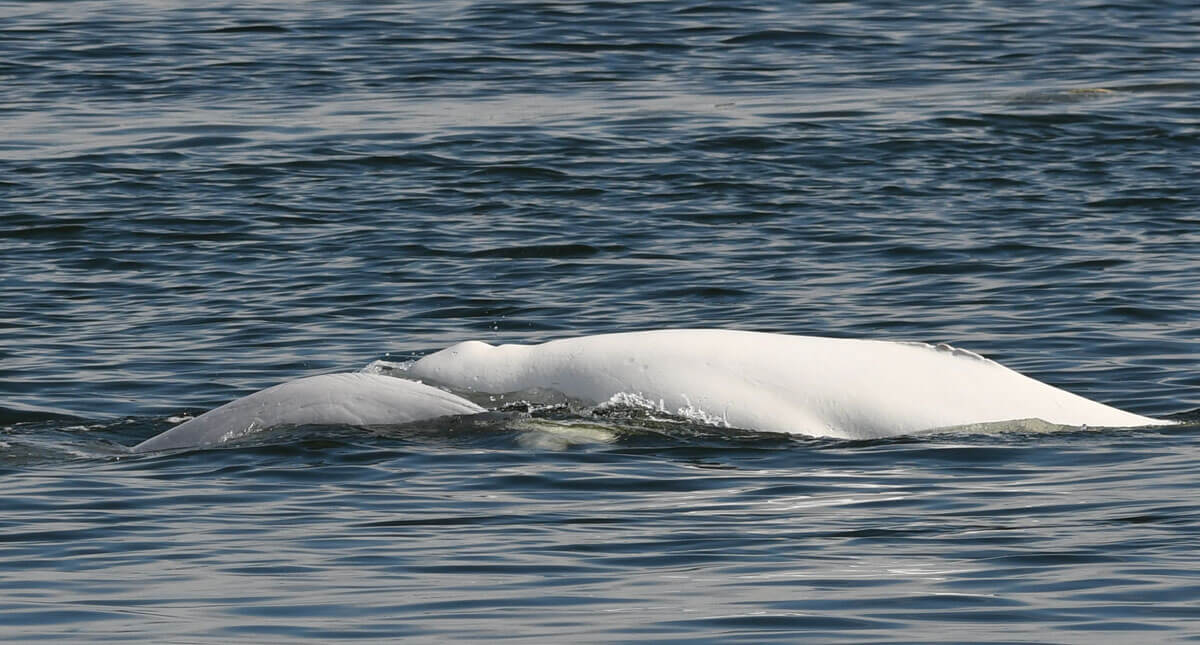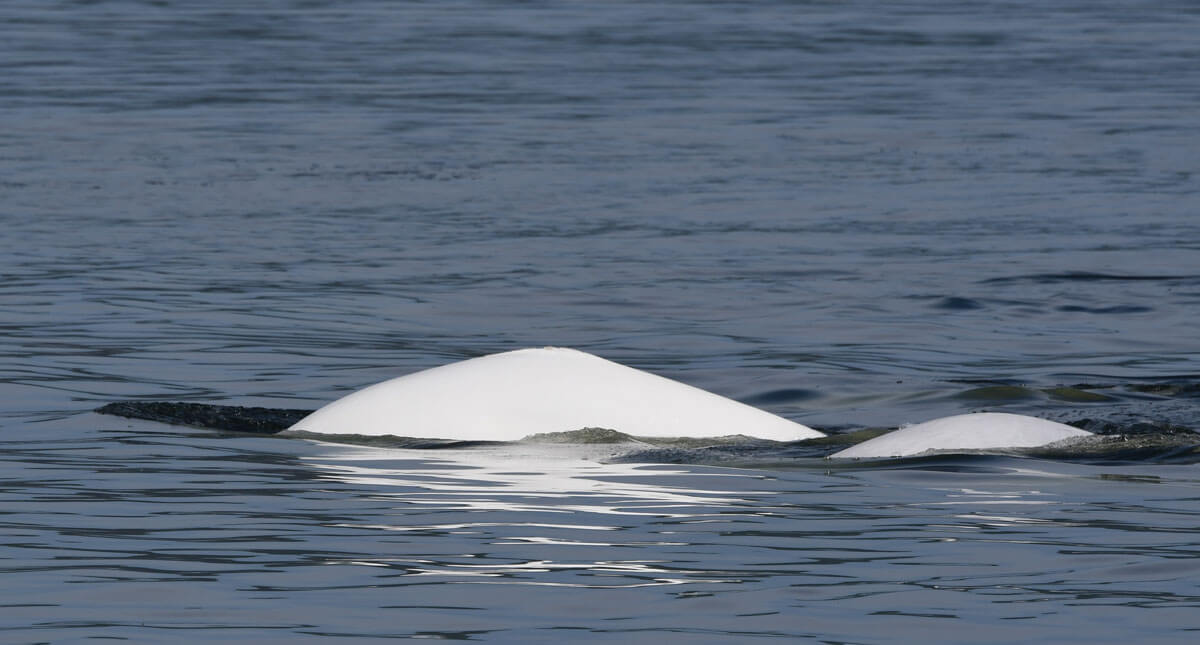Nona
Beluga


Adopted by Édouard Maccolini et Julie Hébert
-
ID number
DL0235
-
Sex
Female
-
Year of birth
Before 1978
-
Known Since
1990
Distinctive traits
Nona has a beautiful “W”-shaped notch in the dorsal crest. On the left flank, at the back of the head, a small black line appears when the beluga takes its body out of the water.
Life history
When we first met her, Nona was already white. At birth, belugas are café-au-lait brown, before turning grey-blue for one or two years. Nona was already an adult when we met her, so she was born before 1978.
Her size and the company she keeps lead us to believe that Nona is a female. In the summer range, females form large communities in which they look after newborns and young. Nona has regularly been seen in groups of adults and young grays, and adults with young grays and calves.
Female belugas are usually loyal to territories. However, Nona’s sightings vary from area to area from summer to summer. She visits both the north and south shores, but has never been seen in the Saguenay.
Following Nona’s story will help us better understand the social and reproductive life of belugas and their attachment to particular territories. By understanding how belugas live, we can better protect them.
Observations history in the Estuary
Years in which the animal was not observed Years in which the animal was observed
Latest news
July 3, 2019 : The BpJAM is back at sea for the 2019 field season, with the same team as last season.
The foggy morning forces us to stay docked : difficult to find a herd in the fog, let alone track it or get a good idea of general beluga behavior. We might as well take advantage of the “bad weather” to get on with our office work.
By early afternoon, the fog had lifted from the waters of the Saguenay-St. Lawrence Marine Park. Quickly, we still have enough time before dusk to set off in search of belugas. After a few dozen minutes of searching, we find a group of belugas downstream from Île Rouge, off Baie-Sainte-Catherine, about mid-channel. The herd numbers around forty white and grey individuals. Among them is Nona, whom GREMM has been tracking since 1990.
The group is rather difficult to approach, sometimes multidirectional, sometimes “milling”, i.e. diving repeatedly and coming back to the same spot. The behaviours of these belugas are quite interesting. At the surface, the belugas are active, spitting and vocalizing.
After two hours of taking identification photos to update our “family album”, we decide to launch the drone to get a better idea of what’s going on below the surface.
At first, we observed sociosexual behavior : pelvic thrusts, brushing up against each other, and so on. Then, what was hard to document from the boat becomes obvious : we observe, for the first time from the air, beluga whales hunting fish. To see the video, click here!
Sponsors
Édouard Maccolini et Julie Hébert adopted Nona (2021).


